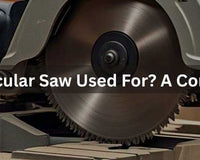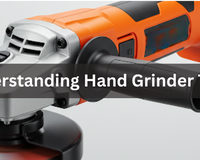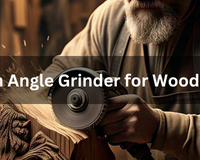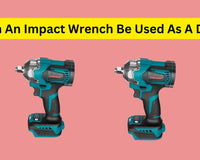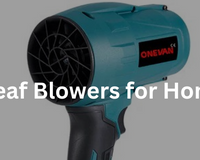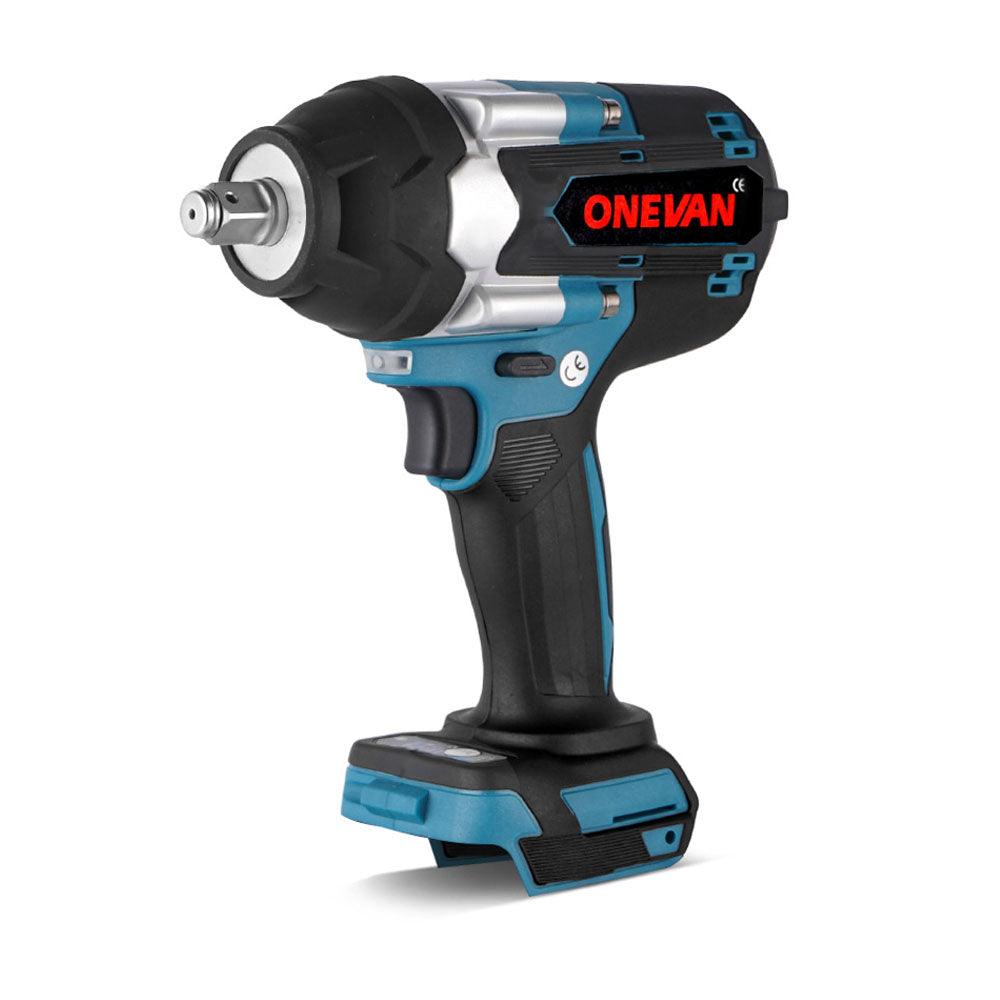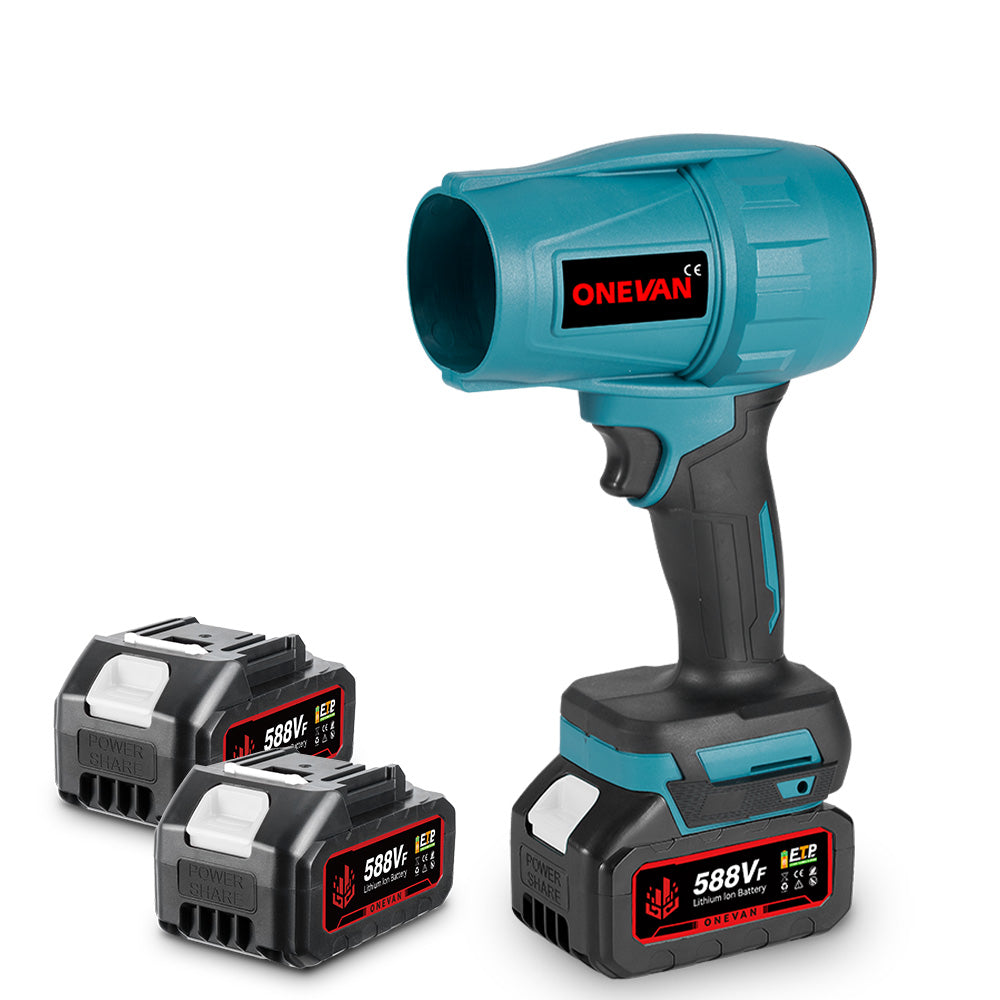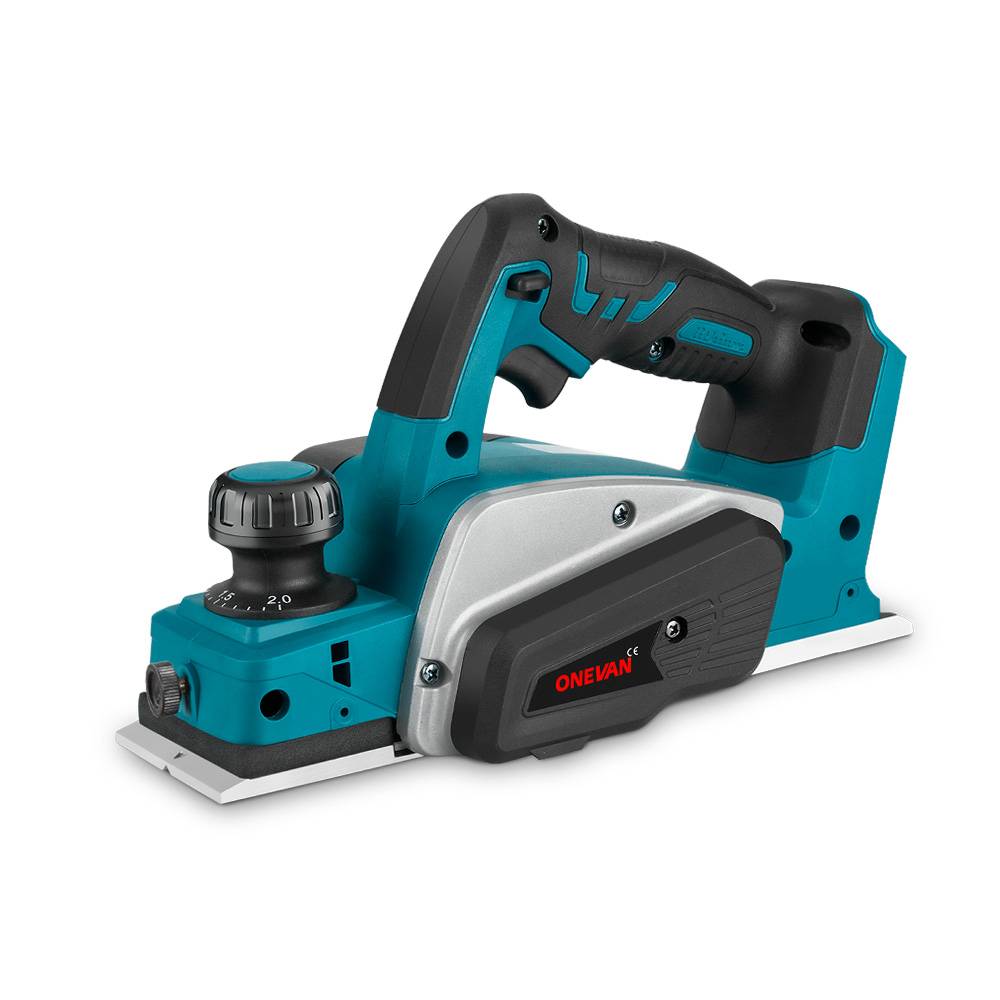Have you ever thought about how mechanics lose the rusted and stubborn nuts in seconds? On the other hand, with a manual wrench, you keep struggling to open a basic but. Is there any difference in working principle or does the mechanic have a special power tool? Yes, they have impact wrenches which are used from car repairing to building skyscrapers.
So, what is hidden in that friendly-designed wrench?
Why Should You Care?
Whether you're a seasoned mechanic or a DIY enthusiast, understanding how an impact wrench works gives you an edge over your competitors. Subsequently, you can be more productive. You'll know how to choose the right wrench for the job. For instance, avoiding over-tightening bolts, and getting the most out of this powerful tool.
1. The Main Components of an Impact Wrench

As discussed earlier, the impact wrench has two main components; a hammer and an anvil. When the torque required is low, the tool just works sort of like a drill. The tool's RPM free spinning that fastener on or off.
But when torque is required, the hammer binds up from spring tension and is forced up in the process, then over and leaps forward to strike into the next wing of the anvil, which is called a dock. The faster you can repeat this process, the faster the hardware can be driven.
On the other hand, more gear reduction or, aka, lower RPM, would allow you to overcome a larger spring and a larger hammer and make for bigger hammer blows, which is called higher dynamic torque.
An impact wrench has a complex working mechanism. It has an assembly of different but useful tools that deliver efficient features to make your work smoother and productive. We have mentioned the major components separately and briefly written their roles. Ultimately, these parts will help you understand the mechanism of impact wrenches.
Motor:
The motor is one of the most important components of an impact wrench. The impact wrench can be both electric and pneumatic. The motor plays a crucial role in providing the required power to drive the hammer mill.
Hammer Mechanism:
The motor drives the hammer mechanism and provides the necessary rotation. As it rotates, it hits the anvil and creates a high torque impact. Later, it is then transmitted to the output shaft.
Anvil:
The anvil is struck by the hammer mechanism. The force of this impact creates the high torque that makes an impact wrench so useful.
Output Shaft:
Generally, the output shaft is also known as the drive. It is the part of the wrench that connects to the socket. The high torque force from the anvil is transferred to the output shaft. This torque rotates the bushing which helps in tightening nuts and bolts.
Gear System:
The gear system transfers and amplifies the motor's power for rapid hammering motion.
Torque Adjustment (on some models):
Torque adjustment enables operators to take control of the maximum torque output.
Trigger:
The trigger is the control mechanism of the impact wrench. When pressed, the motor is activated, which in turn drives the hammer mechanism.
Reverse Switch:
The function of the switch I to help the user change the direction of the output shaft.
Air Compressor Connection (for pneumatic models):
The air compressor connects the wrench to the compressed air source.
Battery (for cordless models):
Impact wrenches are also battery-operated. These are called cordless impact wrenches. These batteries provide the energy the engine needs to operate.
2. How Does an Impact Wrench Work?
We are going to take a deep insight into the internal mechanism of this power tool. This mechanism has two main parts:
- The Hammer
- Anvil
An impact gun works by storing energy in a heavy rotating mass and then releasing it all at once in small impacts against the output shaft. This puts a lot more force on the bolt or nut that you're trying to tighten or loosen, and it takes a lot of the strain off your wrist.
For the most part, the bits sit still except when it is periodically hit by the hammer internally as it engages with the output shaft. Taking the impact wrench adapter apart was surprisingly easy.
The hammer and output shaft fit together, and the spring pushes the hammer into the output shaft giving it that periodic hammering action. I cut a slot in the case of the impact dye adapter to show about a quarter of the mechanism as it rotates.
Inside an impact driver, you will find a few things. First, as with all cordless tools, today is a brushed or brushless motor driving the first half of what's called the drivetrain. In most cases, brushless is preferred for space savings, power, and heat reduction, but they both work and do the same sort of thing. And that thing is generating a ton of RPMs, often around 20,000 RPMs or above.
Impact Mechanism in Impact Wrenches

Inside these tools, including larger impact wrenches, you'll find an impact mechanism with a planetary gear set on the back. This works to take that high RPM of the motor and turn it into lower but higher torque-capable RPMs.
The purpose of that lower RPM and higher torque is to overcome the spring tension and hammer mass on the ball and cam sprung impact mechanism. Therefore, all of them are used in cordless impacts today.
First, the motor is rotated by electricity, causing the built-in hammer to rotate. The impact exerted in the direction of rotation rotates the bushing attached to the end of the shaft so that screws and nuts can be tightened and loosened forcefully. The main components of an impact wrench are the power part, the drive part, and the socket part.
Power Source
The power part is the driving force of the impact wrench. The main motors used are DC motors for battery-operated wrenches and AC motors for socket wrenches.
Drive Train
The driving part is made of spring or metal with a cylindrical groove, etc. If excessive torque is applied during rotation, the groove is removed and only the driving part rotates. This limits the torque and protects against overloads.
Socket/Chuck
The socket wrench insert is removable and can be used for different screw sizes, which is a special feature of impact wrenches. Some products can be used not only as a screw but also as an impact wrench, e.g. B. replace the socket.
3. How Do Adapt Torque Output to Fit Specific Task Needs?

Impact wrench provides greater flexibility to control the torque when it is not necessary. It is just like a hammer being used by a mechanic on a spark plug; impact wrenches need torque modifiers for various tasks. Here is a list of the tools they use:
Preset Torque Settings:
Preset torque settings are pre-defined torque levels. We can select them using a switch. Subsequently, the operator can select the setting based on bolt size and material. It is for consistent tightening without over-forcing it. It's like pre-programmed power levels for different situations.
Variable Speed Trigger:
This feature enables fine-tuning torque output. The harder you press, the faster the motor spins, and the more torque is delivered. You can grasp the nuts with more precision with this feature.
Torque Adjustment Dial or Switch
This is very similar to presets. The adjustment dial enables even more granular control over the maximum torque output.
Electronic Torque Control:
Electric torque control is an advanced feature. In this feature, the impact wrench incorporates sensors to automatically shut off the wrench when it reaches the given torque level.
Torque Limiting Extensions:
These extensions are a kind of special sockets. We can call them safety valves. As soon as you reach the required torque, the extension flexes. It protects the bolt from damage.
Brushless Motors:
Brushless motors are used to take more precise control. This feature typically helps in a lot of tasks that require power and efficiency along with dealing the delicate objects.
4. Different Types of Impact Wrenches:
There are impact wrenches on the market with different drive types. Some of the most common types of impact wrenches are:
- Pneumatic impact wrenches
- Corded Impact Wrench
- Cordless Impact Wrench
Depending on the application for which you need your impact wrench and how often you want to use the device, one of the three variants is recommended. Here is a brief overview.
Power type
Most often, manufacturers produce electric, pneumatic, and cordless impact wrenches. Less common in the assortment are gasoline, hydraulic, and manual ones.
Pneumatic impact wrenches
Pneumatic impact wrenches are quite common in auto repair shops. These power tools feature excellent performance without heating. Ultimately, you can work for a longer time for a maximum time. Subsequently, they are fireproof and do not create sparks.
Corded Impact Wrench
A corded impact wrench is also a powerful tool. Using this impact wrench, you can prolong your work for a long time. This is possible because the built-in fan cools the engine, preventing overheating. It features a low noise level and high efficiency.
Cordless Impact Wrench
The cordless impact wrench allows you to move around the room without hindrance because... it has no hoses or wires. This tool is great for small jobs, such as fastening panels.
In addition, there are impact and non-impact models. The first option is perfect for professional work. The presence of an impact makes it possible to tighten fasteners more reliably or make it easier to unscrew rusted connections. There are models on the market with different shock frequencies. This characteristic determines the range of tasks of the tool:
- Assembly and disassembly of large and heavy structures - from 3000 beats/min;
- Unscrewing stuck and oxidized fasteners - 3200 beats/min;
- Car maintenance - from 2300 beats/min.
When working with a non-impact tool, the main load is transferred to the hands. They are used for household needs when the nuts do not need to be unscrewed often. The models allow you to cope with small fasteners and assembly and disassembly of light frames.
5. What Occasion Requires a Manual, Pneumatic, Hydraulic, Cordless, or Electric Impact Wrench?
Choosing the best impact wrench significantly depends on the nature of the task. In the below table, we have discussed types of wrenches along with their ideal use cases, advantages, and disadvantages.
| Type of Impact Wrench | Ideal Use Cases | Advantages | Disadvantages |
| Manual | - No access to power or air supply - Precise torque control needed | - Portable, lightweight - Safe for delicate applications - Requires significant user effort | - Limited power output |
| Pneumatic | - Automotive repair shops - Heavy machinery maintenance - High torque output needed | - Powerful - Durable - Cost-effective | - Requires an air compressor - Noisy |
| Hydraulic | - Industrial settings - Construction projects - Extreme torque requirements | - Highest torque output - Suitable for heavy-duty tasks | - Bulky and heavy - Most expensive option |
| Corded Electric | - Workshops - Factories - Prolonged use applications | - Powerful - Consistent performance - Relatively quiet | - Limited mobility (requires power cord) |
| Cordless | - Field service - Emergency repairs - DIY projects | - Portable - Convenient for tight spaces | Limited runtime on battery - Requires battery charging |
6. How Do Impact Wrenches Increase Work Efficiency and Combat Fatigue?

Less Effort
Impact wrenches can deliver massive twisting force without much user effort, which eliminates the use of manual muscles hence increasing the speed of completing tasks. For example, repetition of bolt tightening and loosening.
Faster Working
When compared to traditional wrenches, an impact wrench speeds up the process of loosing and tightening fasteners. This results in faster completion of projects as well as increased productivity.
Higher Precision
Some impact wrenches have options like presetting torque and electronic torque control. In this case, you can effortlessly control the impact wrench torque to secure the nuts from any damage.
User-Friendly Features:
Modern impact wrenches feature excellent LED lighting. This feature allows the operator to continue the work in the dark places. Subsequently, you stay away from any unwanted injury.
Advancements in Battery Technology:
Cordless impact wrenches have witnessed a surprising improvement in power tool battery life and power. Now battery-operated wrenches come with extra life cycles and charging time is also very swift.
7. Which Safety and Usage Considerations Are Essential for Impact Wrenches
No doubt these tools provide excellent work efficiency but ignoring the impact wrench safety rules can put you in trouble.
Gear Up for Protection (PPE):
- Safety Glasses with Side Shields
- Hearing Protection
- Gloves (Optional, Depending on Application
Setting the Stage: Proper Setup and Usage
Pre-use Inspection:
- The Wrench: Look for cracks, loose fasteners, and damaged power cords
- The Socket: Ensure it's not worn or damaged
- Air Pressure (Pneumatic Models): Check the gauge if it is in the recommended range
- Battery Charge (Cordless Models): A low battery can stall the wrench:
- Secure the Workpiece: Clamp the object you're working
Correct Operation Techniques:
- Impact Wrench Socket Selection: Use the correct socket for the fastener
- Grip and Control: Hold the wrench firmly with both hands
- Operating Technique: Apply short bursts of power for tightening or loosening
- Safe Direction: Always point the wrench away from yourself and others
Be Prepared: Emergency Procedures
Even with the best precautions, smaller negligence can lead to bigger accidents. Here's what to do:
- Accidental Contact: If accidentally contacted by the wrench, immediately turn off the power.
- Malfunction: If the wrench malfunctions (e.g., excessive vibration, air leaks), stop using it
- Injury: In case of injury, seek medical attention promptly.
8. Conclusion
Summing up; impact wrenches are powerful tools that can significantly improve your performance. No matter, if you are using them for domestic or commercial purposes, battery-operated impact wrenches can accelerate your productivity to the maximum level. We recommend going through the safety measures and precaution tips we mentioned in the article.
9. FAQ:
1. How do you use an impact wrench?Impact wrenches are used for loosening hard nuts and bolts. To start, select the correct size socket and link it to the wrench. Make sure that the wrench is in reverse to loosen (consult your manual if uncertain). Put on the nut with a socket then squeeze the trigger gently. The nut starts breaking away as the wrench spins. Don’t exert pressure; instead, let the wrench do it! To tighten, change the direction of your spanner and then repeat all these steps.
2. What is the difference between an impact wrench and an impact driver??Impact wrenches and drivers are built to tackle different tasks. Impact wrenches are powerful tools that are designed to handle automotive or machinery’s rough nuts and bolts. They use sockets and have massive torque for loosening or tightening them. Impact drivers are smaller, using screwdriver bits instead. They are ideal for driving large screws into wood or metal material as well as removing tight ones.
3. Why would you need an impact wrench?Nuts and bolts require an impact wrench that is highly effective in performing tough tasks. While regular wrenches depend on your skill, impact wrenches work using powerful rotational thrusts which are capable of breaking loose rusty nuts, lug nuts on car wheels, or tight bolts. They are faster and much simpler for you especially when handling big tasks!
4. Is it worth buying an impact wrench?The importance of purchasing an impact wrench depends on your needs. Is it a tool you need for car mending, machine fiddling, and nut or bolt opening? Yes! It is a great convenience for difficult jobs thereby saving you both time and energy. Nonetheless, if you are just into infrequent home-based DIY tasks, then a standard wrench may suffice. You should take into account its frequency of use as well as the types of activities you want to fix.
5. Is an impact wrench stronger than a drill?Yes, drills are indeed good for making holes and putting screws in them, although they are only able to produce a lot of power by spinning. Impact wrenches, on the contrary, deliver more force. They use a pulse-like motion as well as rotation to apply torque following the required force. When it comes to removing obstinate or stuck nuts and bolts, an impact wring fits right in.
6. Can I drill a hole with an impact wrench?Technically, you can use an impact wrench for a hole but that is not advised and it should not be your first option. Here is why:
Regular Drill Better Suited: Drills are built for exact drilling with adjustable speeds and clutches - Impact wrenches are better for high torque for difficult fasteners which might impair drill bits or leave holes jaggedly formed.
If all you want to do is drill then go for regular drills as the more secure and efficient tool.
7. Will theimpact wrench break bolts?Breaking the bolt is possible with an impact wrench but it depends. Impact wrenches give out strong bursts of torque and that makes them better when it comes to tackling stubborn bolts.
Using the wrong size socket, setting the wrench too high, or over-tightening can strain a bolt too much and cause it to break.
In such cases, therefore, be cautious when applying an impact wrench onto older or rusted fasteners. Instead, one may consider starting with a regular wrench first if he/she can. But again, if you have those truly stuck bolts, you might find that an impact wrench is just what you need in a true power tool; only be careful!
No, impact drivers are not good for lug nuts. Here’s why:
Impact Driver Has Lower Torque: Impact drivers have less torque than impact wrenches because they are specifically designed for driving screws. Whereas lug nuts require significant effort to be safely loosened and tightened, an impact driver would simply be too weak. Impact wrenches are made mainly for the high torque that is needed for lug nuts. They also possess bigger sockets that fit the size of lug nuts.
It is not recommended to do the following tasks with your impact wrench:
An impact wrench is meant to rotate quickly, not to strike. Hitting things with an impact wrench can damage it and cause injury. An impact wrench has enough power to over-tighten bolts which can break them or damage threads; if necessary use a torque wrench for tightening.
Use of a socket that does not fit tightly on the fastener and nut may damage both the tool and fastener. Ensure that the socket fits snugly on the bolt or nut.
The answer depends on the car. In some smaller cars, it might be enough to get lug nuts off with 300 ft-lbs, but mostly not recommended as they will strip out.
Safety should always come first: You need to torque your lug nuts to a specific value for secure wheel fastening. It is dangerous when you use too little torque which makes the lug nuts get loose while driving.
Most automakers recommend a certain torque range for their wheel lug nuts, generally between 75 ft.-lbs and 150 ft.-lbs. Always check your vehicle’s manual for the exact specs.


